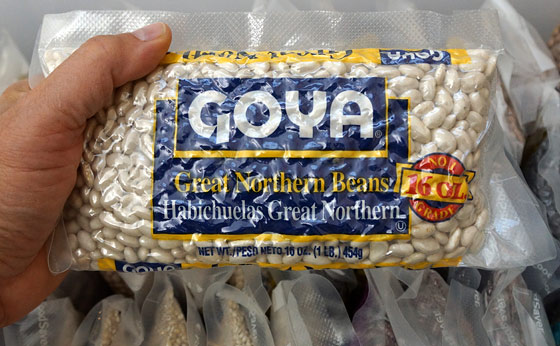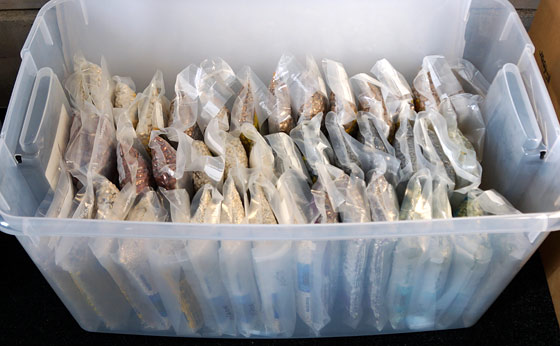The Best Way How To Store Dried Beans Long Term
There are two particularly good methods how to store beans long term.
One of the best ways for medium term storage (several+ years) is to vacuum seal. For very long term storage (many years+), a good method is to use Mylar bags with oxygen absorbers. Read on for more specifics…
Tip: Rice & Beans are excellent and inexpensive choices for preparedness food storage. Why? Because rice and beans together make a nutritional survival combination:
Rice is rich in starch, and an excellent source of energy. Beans are rich in protein, and contain other minerals. The consumption of the two together provides all the essential amino acids and it is no wonder that this combination is a staple of many diets throughout the world.
~ Rice and Beans | A Survival Combination
Store Beans Long Term with Vacuum Sealer
The enemy of successful long term food storage is oxygen, moisture, heat, and potentially ‘bugs’.
Use an ordinary vacuum sealer (e.g. FoodSaver) and associated vacuum-seal bags to seal individual one-pound bags of dried beans. I buy these bags in bulk. WAY cheaper…
>> FoodVacBags – Quart Sized
(view on amzn)
A typical vacuum sealer will pull out most of the air. Therefore much of the oxygen will also be removed. But my experience is such that the vacuum seal method will last for several+ years without issue.
I like this method because it enables you to store different varieties of dried beans / legumes since you’re only doing one-pound bags at a time. (Versus storing large quantities of beans long term in bulk via a 5-gallon bucket and O2 absorbers).
We enjoy a wide variety of beans and this enables us to pick and choose what we store in a diversified way.

As you can see in the picture, to store them we first vacuum seal each individual one-pound bag of beans with our FoodSaver and vacuum sealer bags.
First, cut a number of slices into the plastic 1-pound bag of beans. This will allow a vacuum to be pulled into the bean bag itself. Then place the bag of beans into a vacuum sealer bag. Vacuum Seal. Done.
Besides the initial outlay for the cost of a vacuum sealer (which we’ve had for quite some time and use it on all sorts of things – paying for itself already), the cost is that of a vacuum sealer bag.
Pro Tip: Buy rolls, it’s cheaper. But don’t cheap out on no-name brands that might not hold a seal for long.
I can easily store 50 pounds of individually sealed one-pound bags of dried beans in a heavy duty Sterlite 70-Qt plastic bin (shown above). That’s a-lot of beans!! They will store well for many years. I estimate 5 years without issue.
>> The Most Popular Vacuum Sealer Machine
(view on amzn)
Store Beans Long Term in 5-Gallon Buckets, O2 Absorbers
Mylar Bag | Oxygen Absorber | 5-gallon bucket
If your intention is to store dried beans for very long term storage (e.g. 10 years more or less), this is what I suggest:
Remove All Oxygen With O2 Absorbers
To get as much oxygen out as reasonably possible, use 2,000cc oxygen absorber for each 5 gallon pail of dried beans.
[ Read: Oxygen Absorbers For 5-Gallon Bucket Food Storage ]
First place an appropriate size Mylar foil bag in a 5 gallon bucket. Then fill with dried beans, leaving a few inches head space for the lid. Drop in a 2,000 cc oxygen absorber. Seal the Mylar bag with an iron.
>> 5 Gallon Heavy Duty Mylar Bags with 2000cc Oxygen Absorbers
(amzn)
Pro Tip: I love the Gamma lids (spin on lids) for easy access to my long term storage in 5-gallon buckets.
[ Read: Gamma Seal Lids | Are They Worth It? ]
Continue reading: How to Seal a Mylar Bag in a 5-Gallon Bucket

